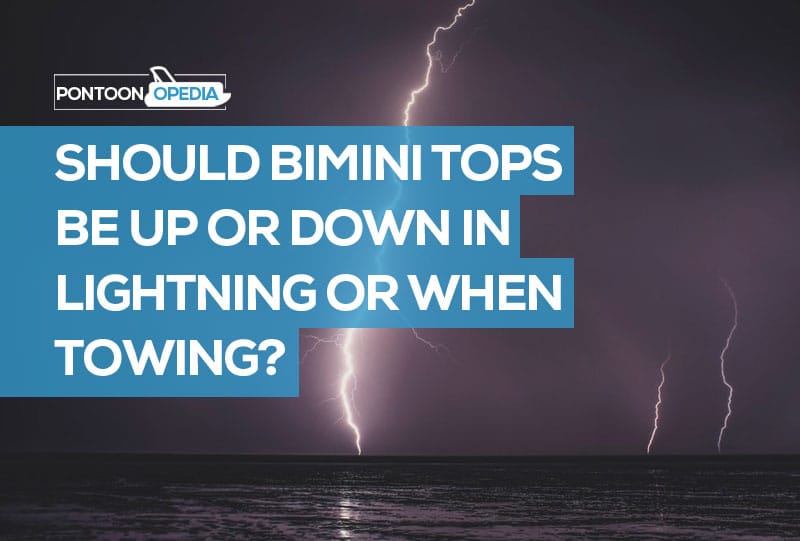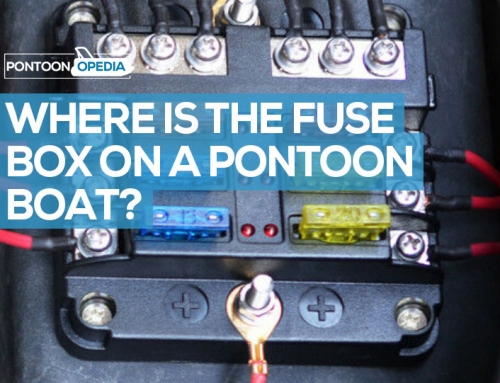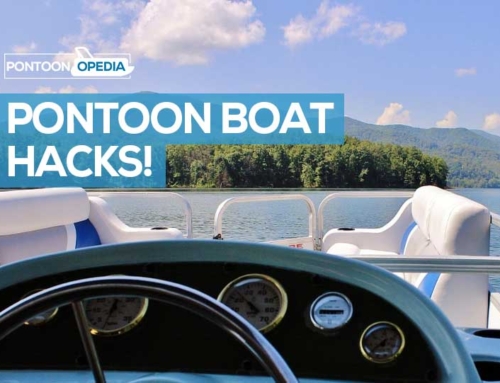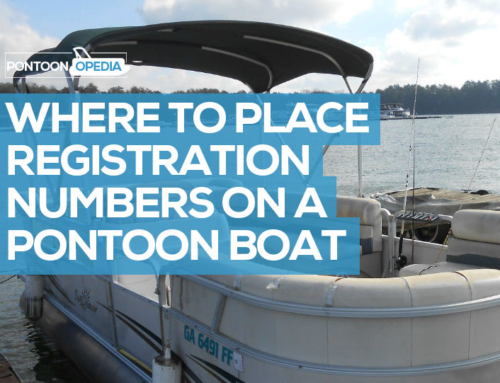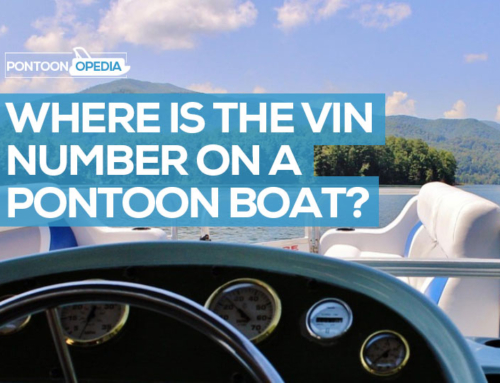Your boat’s Bimini top is 100% essential, particular on those hot summer days when out on the lake or water. But at what point should it be up or down?
There are two main areas where this commonly pops up for discussion, both of which I am going to cover off today with my own views, and those of other boaters.
The two questions are:
- Should You Tow and Trailer with Your Bimini Up?
- Should Your Bimini be Up or Down in Lightning?
Bimini Up or Down When Towing?
Let’s start off with the trailering and towing scenario.
You’re going to get a 50/50 split, with some boat owners saying that they travel with their Bimini in the up position, and some in the down position.
I personally always tow and trailer with the Bimini down for a number of reasons which are entirely my own point of view.
- It won’t catch on any obstacles such as gas station forecourts and trees
- I believe that on high speed journeys, wind could place stress on the frame
- I hear squeaks and rattles when driving which I really don’t like
- Biminis are expensive to repair and replace so I don’t risk it
- It takes no effort to collapse the Bimini down just in case
Beware of Obstacles that Can Tear Canvas
Let’s get into those points in a little more detail, and firstly talk about obstacles.
When I first bought my pontoon boat I used to leave by Bimini up with the cover on it when driving.
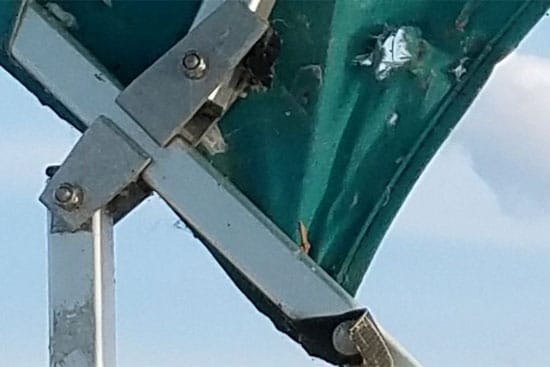
Image credit unknown – found via Pinterest.
Then one day we got home and there was a half inch tree branch sticking out of the cover.
Now thankfully it only put a small hole in the outside cover and didn’t tear the top itself, but I still had to do a quick patch up and repair.
Wind Could Create Stress on the Bimini Frame
Next up, the wind.
I drive faster on the road than my pontoon boat travels on the water.
My pontoon does not travel at speeds over 40 miles per hour so why would I want to expose my Bimini frame to the stress of a 65 mile per hour tow?
It makes no sense to me to do so.
Based on that, I believe that the wind resistance when driving and towing could greatly shorten the life of the Bimini frames, although I have no scientific evidence for this.
If your Bimini has the short legs for towing in the down position, then that’s how you should do it.
If it’s left up, then you could get height clearance problems, and possibly place unnecessary stress on the frame. Do it down like it’s supposed to be for towing which is in the down position.
What Other Boat Owners Say
However, as I mentioned, other people including pontoon boat owners do it differently, some agree with me, some don’t.
Here’s a selection of what other boat owners are saying on social media about the Bimini up or down when towing debate:
“I typically put my Bimini down when towing but my brother in law doesn’t. It really depends on how far you are traveling. If you aren’t getting on the freeway then it won’t hurt anything I think.”
“I always leave mine up and after 13 years of trailering and towing in the up position it hasn’t hurt it yet and I’ve never had any damage.”
“Mine is always set to the down position after my wife clipped a tree limb, wrecking the frame where I had to replace it. I’ve now made a PVC pipe frame to hold it laid back.”
“The more you do transport with Biminis up then the more it wears on the joints of the tops frame. Those joints are after all a steel screw through a piece of aluminum.”
“It’s all about common sense, and I know there’s not much of that left in today’s society, but if you pull up to the neighborhood gas station or boat launch, then no big deal if the Bimini is down. You may pull many miles with it up, but to those, I’d say that you are taking unnecessary chances.”
“Do you hear any squeaks and rattles coming from your Bimini frame while on the water? If yes, just bear in mind that’s movement and movement equals wear and tear. Why subject your equipment to any more unnecessary wear and tear than necessary and that includes when towing.”
“I had to replace my Bimini frame about 3 months after I bought my boat because of something stupid I did with it in the up position, so I’m not taking any chances with mine. Just take the extra few seconds and lower it.”
“Don’t travel with the Bimini up because it stresses the aluminum fittings. Over time they may develop cracks and break. Lay the tops down and you greatly reduce the risk of increase wear and damage.”
“We put our Bimini down when travelling on the highway. I once got behind someone trailering their pontoon with the top up and the stress was wrenching the Bimini frame back and forth. That puts a lot of stress on the fittings, and eventually they will be making some avoidable repairs. Never mind the reduction in gas mileage.”
So, based on that small canvassing of opinion, it appear that most pontoon owners travel and tow with their Bimini top in the down position.
For me it makes sense, and if it takes just seconds to do could save you a whole lot of money – it doesn’t seem to be worth the risk of towing it in the up position.
Bimini Up or Down During Lightning?
I won’t pretend to be an expert on lightening, and thankfully it’s quite rare where I take my pontoon boat.
However, I realize that in places such as South West Florida there will often be pop-up electrical storms that can come out of nowhere.
That can be very frightening, especially if you have young kids and passengers on board and you are worried about the Bimini top and frame being hit by lightning.
So, should your Bimini be in the up or down position during a lightning storm to prevent dangerous strikes on your boat?
To research this question, I took a look at a popular boating forum and saw a post from a guy who works in the lightning business – I have no idea what his credentials are, but he seemed to offer the best reply to the question.
Here’s what he said:
“Having the Bimini top up or down doesn’t make any difference on the probability of receiving a direct strike (OK, well maybe 0.0001%). At sea level, objects need to be more than about 75 metres in height before there is much statistical difference in their likelihood to be directly struck. If a Bimini top, VHF antenna, or vertical fishing rods made much difference, you would read about sail boats being struck continuously (which they aren’t).”
He then went onto say that if a Bimini is struck by lightning, it could actually be a good thing as it might help divert the electrical current to the water below the boat, rather than the boat itself.
His conclusion was to say that if you are unfortunate enough to get caught up in a lightning storm then don’t worry about the Bimini top. Instead you should focus on getting your boat, pontoon or otherwise, out of the storm’s path.
“On larger boats in the tropics, anybody with any sense will have a low-impedance path installed between the taller metallic objects on the boat (a mast, tower, etc) and the water. Most sail boats do this. I’m not sure about sport fishing boats.”
How Likely is a Lightning Strike?
I didn’t want to just take his word for it though.
I found some information online about the facts surrounding lightning strikes on boats to see how common they actually are, and whether we should be worried.
The table below shows the probability of being hit by a lightning strike, depending on the type of boat that you own.
The probability of a lightning strike by type of boat, 2003–2013 from BoatUS.com.| Type of Boat | Chances per 1,000 |
|---|---|
| Multihull Sailboat | 6.9 |
| Monohull Sailboat | 3.8 |
| Trawler/Motoryacht | 1.5 |
| All – Overall Average | 0.9 |
| Bass Boat, Runabout, Pontoon Boat | 0.1 |
There was then research taken from national data to show the probability of a lightning strike depending on the size of your boat. You can see that research in the table below.
The probability of a lightning strike by size of boat, 2003–2013 from BoatUS.com.| Size of Boat | Chances per 1,000 |
|---|---|
| 0-15 Feet | 0.0 |
| 16–25 Feet | 0.2 |
| 26–39 Feet | 2.1 |
| 40–64 Feet | 6.0 |
You can see this research in full on the BoatUS.com website.
Conclusion on Having a Bimini Up in Lightning
To conclude, after reading research and getting what I believe to be expert opinion, I think the risks of having your Bimini top up during lightning is almost minimal.
This is particularly true for pontoon boat owners, where the national statistics shown in the table above say that there is a 0.1 chance in 1,000 of you taking a direct hit.
And in fact, you might want that Bimini up in a storm to give shelter from the rain.
But please don’t take this as professional advice, it’s purely me doing my own online research so make your own decision on this and do your own research into safety.

